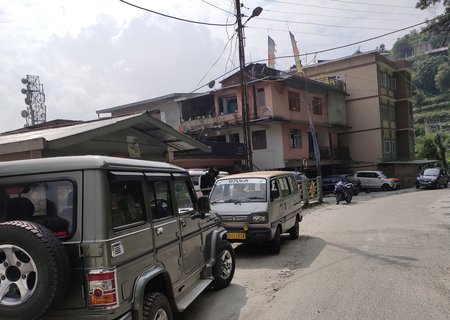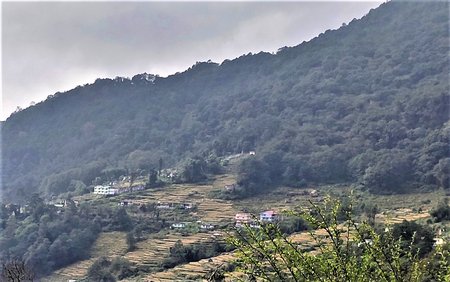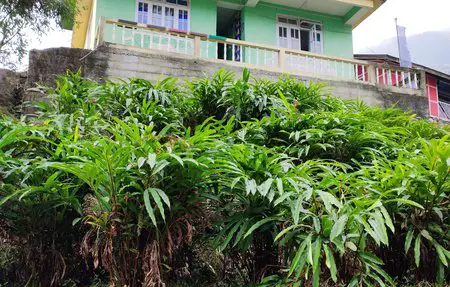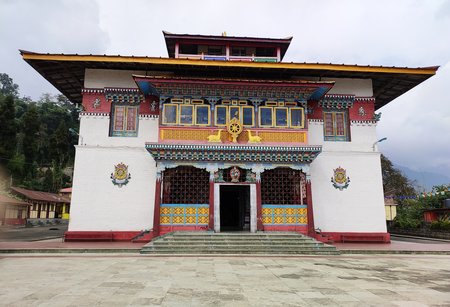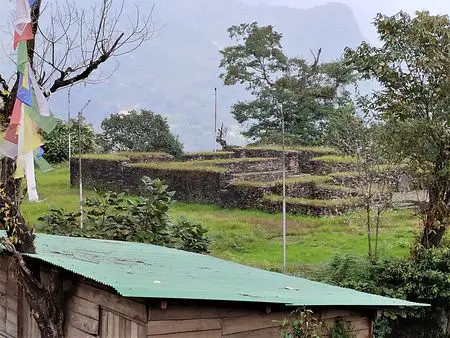Touring Phodong
A Village in North Sikkim
Phodong is a small village located 38kms from Gangtok and along North Sikkim highway at an altitude of 4,000ft. It takes about 1 hour 45 minutes to reach Phodong from Gangtok. Along the way you will pass by the historic
Kabi Lungchok where the Lepcha and Bhutia tribes had sworn blood brotherhood in 13th century so that the two communities could live harmoniously in the hills here.
Phodong, North Sikkim
On the way from Kabi to Phodong,
Fambong Lho Wildlife Sanctuary lies to the west of the road along the slope of the hill. The forest is known for its exotic small animal life and wide range of colorful rhododendrons and orchids. However, there is no access route to the sanctuary from here. You can easily visit Fambong Lho WLS from Gangtok (20kms by car).
There are small roadside eateries at Phodong. Since it is roughly half way between Gangtok and Mangan, Phodong can be a good place for a tea break. At several points, you get wonderful view of the landscapes. The villagers here mainly engage in step farming on the hill slopes.
View of step farming around Phodong
Large cardamom plantations can also be seen at Phodong. Shortly near the market area and from the main road, a steep uphill narrow road on the right leads up to the famous
Phodong Monastery about 1km away. This is the main tourist attraction in Phodong and almost all tour packages of North Sikkim cover this. Phodong Monastery was built in 1740 and belongs to Karma Kagyu sect of Buddhist. This is considered one of the six most important monasteries in the whole of Sikkim.
Cardamom plants in Phodong
Further up and only about 2-minute drive away is Tumlong which was the erstwhile third capital of the Kingdom of Sikkim when the capital was shifted from Rabdentse to this place in early 1800s by the King Tshudpud Namgyal because of repeated raids by neighboring Nepal. Tumlong remained as the capital for nearly 90 years and then the capital was moved to Gangtok by Thutob Namgyal.
Phodong Monastery
You can see the ruins of Tumlong Royal Palace. The palace was originally built in 1814 in Tibetan architecture after the capital was moved here. The palace originally looked more like a large gompa with walls typically inclined inward as in a monastery. There were small windows on top of the palace walls and two brass tops at two ends of the roof, and crown-like top at the middle.
Ruins of Tumlong Palace, North Sikkim
There is hardly any remains of the palace now. All what you can see is the foundation and some stone walls scattered here and there, and covered mostly with moss and wild shrubs. However, the chortens around the palace can still be seen and they have remained almost intact.
Sir Joseph Hooker, famous British botanist was arrested and detained in Tumlong Palace in 1849. This incident was published in the Himalayan Journal in details. You can get a brief on the incident in a section under
Sikkim's History and know why such arrest was made by the king.
Although Phodong Monastery is nearby (only 650 meters below Tumlong), but it belongs to the Karma Kagyu Sect of Buddhists. So the Nyingma Sect had to build another monastery here once the
the capital of Sikkim's kingdom was established at Tumlong. And therefore, the Labrang Monastery came up 1.5kms away and further up from Tumlong which belongs to the Nyingma Sect of Buddhists. It's located at an altitude of 7,000ft on a hill top and within a jungle.
Labrang monastery was built in 1826 during the regime of King Tshugphud Namgyal and completed in 1843. The original wooden structures of the monastery were burnt down in fire and were restored in 1978 with government aid. The support structures like the pillars, roof etc were reinforced with steel, however the original architecture has been retained. It has a museum with great collection of murals, Buddha statues and religious manuscripts.
Related Articles
|
Visitors' Reviews/Comments
|
